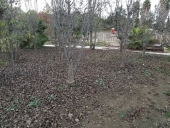








Possible Media - This is where you start
www.possiblemedia.org | Follow us on Facebook | Subscribe to our Youtube channel
 1
1








Possible Media - This is where you start
www.possiblemedia.org | Follow us on Facebook | Subscribe to our Youtube channel
 1
1




Aranya Gardens ~ Permaculture Solutions for a Sustainable Future
'Permaculture Design - a step by step guide' AVAILABLE NOW




"A society grows great when old men plant trees whose shade they know they shall never sit in."
 1
1




Aranya Gardens ~ Permaculture Solutions for a Sustainable Future
'Permaculture Design - a step by step guide' AVAILABLE NOW




"A society grows great when old men plant trees whose shade they know they shall never sit in."
 1
1




Aranya wrote:His story is told by Patrick Whitefield in his 'Permaculture in a nutshell' book, but I have no other references with any more detail.
So the one line of inquiry would be Patrick himself...
How permies.com works
What is a Mother Tree ?




Burra Maluca wrote:
Aranya wrote:His story is told by Patrick Whitefield in his 'Permaculture in a nutshell' book, but I have no other references with any more detail.
So the one line of inquiry would be Patrick himself...
Well as it happens, Patrick will be with us next weed for a promotion of his rather awesome Earth Care Manual, so you could ask him yourself!
"A society grows great when old men plant trees whose shade they know they shall never sit in."




Burra Maluca wrote:
Aranya wrote:His story is told by Patrick Whitefield in his 'Permaculture in a nutshell' book, but I have no other references with any more detail.
So the one line of inquiry would be Patrick himself...
Well as it happens, Patrick will be with us next weed for a promotion of his rather awesome Earth Care Manual, so you could ask him yourself!






|
Where all the women are strong, all the men are good looking and all the tiny ads are above average:
The new purple deck of permaculture playing cards
https://www.kickstarter.com/projects/paulwheaton/garden-cards
|




